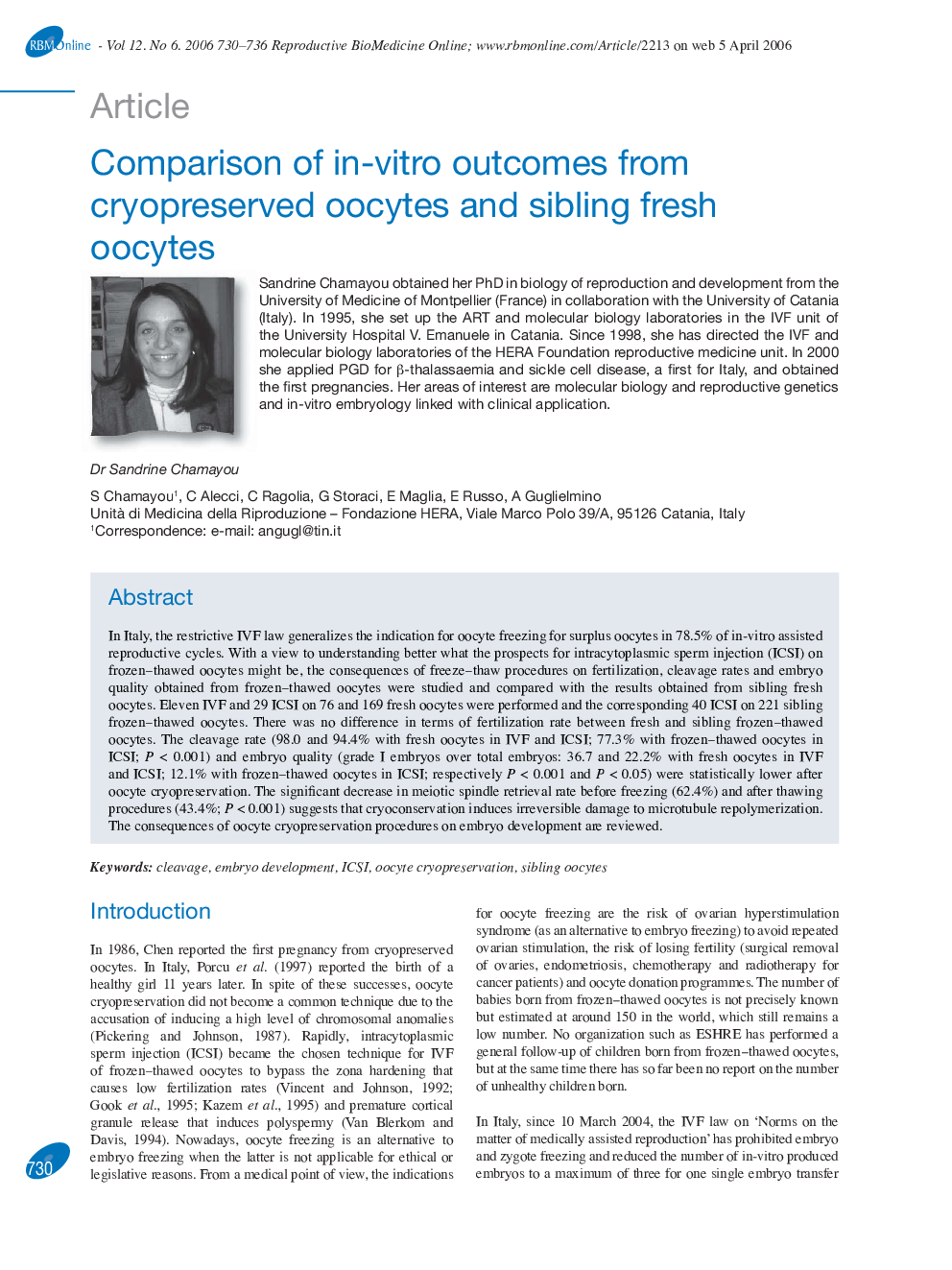| Article ID | Journal | Published Year | Pages | File Type |
|---|---|---|---|---|
| 3973670 | Reproductive BioMedicine Online | 2006 | 7 Pages |
In Italy, the restrictive IVF law generalizes the indication for oocyte freezing for surplus oocytes in 78.5% of in-vitro assisted reproductive cycles. With a view to understanding better what the prospects for intracytoplasmic sperm injection (ICSI) on frozen–thawed oocytes might be, the consequences of freeze–thaw procedures on fertilization, cleavage rates and embryo quality obtained from frozen–thawed oocytes were studied and compared with the results obtained from sibling fresh oocytes. Eleven IVF and 29 ICSI on 76 and 169 fresh oocytes were performed and the corresponding 40 ICSI on 221 sibling frozen–thawed oocytes. There was no difference in terms of fertilization rate between fresh and sibling frozen–thawed oocytes. The cleavage rate (98.0 and 94.4% with fresh oocytes in IVF and ICSI; 77.3% with frozen–thawed oocytes in ICSI; P < 0.001) and embryo quality (grade I embryos over total embryos: 36.7 and 22.2% with fresh oocytes in IVF and ICSI; 12.1% with frozen–thawed oocytes in ICSI; respectively P < 0.001 and P < 0.05) were statistically lower after oocyte cryopreservation. The significant decrease in meiotic spindle retrieval rate before freezing (62.4%) and after thawing procedures (43.4%; P < 0.001) suggests that cryoconservation induces irreversible damage to microtubule repolymerization. The consequences of oocyte cryopreservation procedures on embryo development are reviewed.
